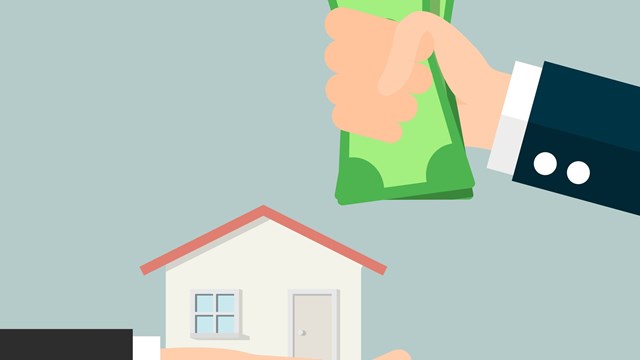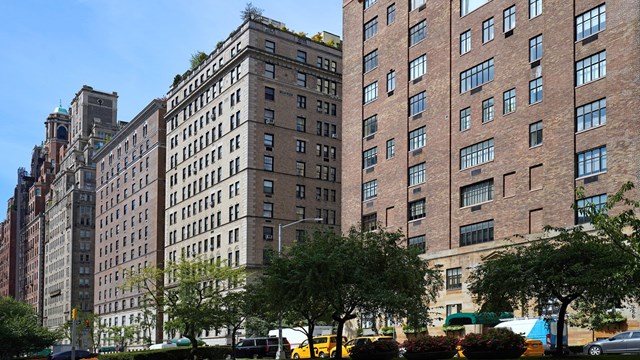At the beginning of 2002, the outlook for the city's real estate market seemed healthy, if a little uncertain. September 11th was still fresh on everyone's minds, and the aftereffects on the co-op and condo market carried over from 2001. According to Joanna Simon, a broker with the Fox Residential Group in Manhattan, "Everyone was in state of shock [after September 11th]. Some people panicked and wanted to get out of city, so they put their properties up for sale." But with a lack of buyers immediately following the attacks, most properties just sat on the market. Simon also found that some prospective buyers who were already in negotiations pre-September 11th didn't want to continue and close the deal.
Starting in January and February of 2002 however, people began to rebound a little. "They started to proceed with their lives - and people who had listed their apartments [after September 11] took them off market and stayed," says Simon. At the same time, there was renewed interested in buying in New York City, and Simon says she "saw a lot of people negotiating, buying, and selling."
Broker, author, and education chairman for the Real Estate Board of New York (REBNY) Sam Irlander of Parker Madison Partners Inc. a Manhattan-based management company, attributes what he calls the "spurt in activity" early last year to "an offshoot of some who where displaced after 9/11." He thinks other buyers saw the availability of properties as an opportunity, and decided to purchase. This continued into the spring, which Simon calls "a very busy time. There was a rallying force among people and businesses."
But the drop in the stock market last summer resulted in another lull in the market. "That had an enormous influence on the real estate market," says Simon. "Fewer people were in positions to buy."
Smaller bonuses, layoffs, downsizing and a weakened economy all contributed to potential buyers stepping back and staying put. Steven James, senior executive director responsible for East Side sales for Insignia Douglas Elliman, says, "It slowed down in summer and was much quieter than years past." He adds that the market has been active year-round for the last 10 years, but last summer reminded brokers of the "old days," when summers were slow.
According to James, the entry-level market, which includes studios and one-bedroom apartments, has seen a great deal of activity this year. Irlander agrees, noting that properties in the middle price range - selling at $400,000 or more, and including studios, one bedrooms, and two bedrooms - moved best. For many of these buyers, says James, "the alternative is renting. Consumers would rather buy and build equity."
Peter Marra, president of the William B. May Company in Manhattan, says, "I think that interest rates in general have helped people buy more for the same dollars. Even though the prices are the same or less [than last spring], they are able to afford or borrow more."
For all the entry-level activity, however, the luxury market is not so strong. Overall listings at Insignia Douglas Elliman are up 40 percent compared to last year, but high-end luxury sales are down.
"Sellers have to get into a new reality," says James. "They can't expect high prices they've gotten in the past." He adds that if buyers have the perception that a property overpriced, they might go see it, but they won't make an offer. "Buyers are very savvy and know when a seller is just trying to cash in."
"The market from $1.7 million to more than $2 million has been really quiet," says James. He remains optimistic, however, noting, "It seems in the last few weeks, more buyers are looking and nibbling. It's very reassuring." James adds that many of the offers are not at asking price, which is an indication that sellers must pay attention to their asking prices. He offers an example of a high-priced apartment that's not getting offers: "A seller asking $2,225,000 needs to reduce to under $2 million. When they do that, they will get offers." Simon observed that for the first time since 1996, it appears to have become a buyer's market.
Why the drop off in luxury sales? "Most of the people who buy have a reason to buy," says Andrew Gerringer, managing director of Insignia Douglas Elliman. "Families are changing, maybe someone just got married." This typically accounts for sales in the lower end of the market. On the other hand, those already living in an upper-end home "may want 4,000 square feet, but don't need it. There's not as much urgency."
"The pace is a little off from where we would normally like it, but there's been a spurt in the last four weeks in the higher end of the market," says Gerringer, who notes that Insignia Douglas Elliman recently sold a penthouse for $3 million, and two 4,500 square-foot units in TriBeCa.
"What we have now is a mixed market," says Marra. "Things are coming on the market that are priced lower than in the spring, and those are selling quickly. Buyers are active and ready to buy, but they're not as frantic [as in the spring]." Marra thinks buyers are looking for quality-of-life issues, and taking those into account.
"There's less discretionary buying now," says Simon. She feels the market is "on hold like after 9/11, but for different reasons. There's fear of what will happen monetarily to people's accounts."
Gerringer thinks that consumers are "cautiously optimistic about the coming year. If you don't have to buy, you can sit back and wait right now."
Irlander cites Harlem and the Upper West Side as hot areas that interest buyers. "The market below 96th Street is already saturated, and properties above 96th Street present opportunities for development," he explains. James agrees: "There's a great deal of interest in Harlem townhouses. Those are great properties, and still tremendous value for those areas."
Lower Manhattan also offers opportunity and viability for residents. "Battery Park City rebounded very fast [after the attacks]," says James. He also feels the Upper East and West Sides are especially popular with families.
Simon recalls that last year, people were afraid to move below 34th Street. "TriBeCa, Greenwich Village, and Battery Park suffered," she says. "Now because the area is cleaned up, there are pretty good prices in those areas, which is encouraging people to buy."
For his part, Gerringer feels that "Soho always remains a very interesting area," and that the area where the West Village, Soho, and TriBeCa converge (around Spring and Washington Streets) continues to be desirable.
Gerringer thinks a good way to gauge the new hot spots isn't necessarily the most obvious: follow the artists. "Artists always lead the front, looking for the cheapest places," he says. "Restaurants and bars follow. Then the rental guys come in with market-rate housing. Then condo guys come in and show them for that same the amount of money, they can own." This is what happened in Williamsburg, Brooklyn, and now buyers who were priced out of the East Village often move to Williamsburg or other outer boroughs. Only one subway stop away from Manhattan, Williamsburg has seen a great deal of growth during the past few years. Chelsea and Soho have also undergone this pattern of activity, and more recently DUMBO has seen an influx of residents.
While every buyer has individual tastes, there are certain perks that co-op and condo hunters find desirable. According to Irlander, outdoor space can be a big bonus to a buyer. He thinks the ability to combine apartments (turn two units into one large apartment) is another plus. In terms of interior amenities, Irlander has found that decorations and features are often not the deciding factor for someone interested in purchasing. "They look to buy for the space and location," he says.
Gerringer points out that in co-ops and condos, storage space is always necessary. "We try to provide storage separate from the apartment, often in the basement," he says. Parking is another feature that attracts buyers, especially in areas where on-street parking is difficult to find.
Indoor features can include new types of stone or glass tile not typically found in other apartments. Gerringer also notes that buyers like interesting wood floors - walnut as opposed to oak, for example. New appliances are always something buyers like to see. Modern conveniences Gerringer knows of in Insignia Douglas Elliman properties include refrigerators equipped with computers, flat-screen televisions in bathrooms, and above-the-stove waterspouts that tilt out from wall, directly over the burners.
Simon has noticed that buyers are looking for homes that are already renovated. "They want to move quickly, so the chances of selling [a renovated apartment] quickly are much more viable." She thinks that most buyers favor recently renovated kitchens and bathrooms, and "the rest can be cosmetic; a matter of taste."
2003: The Year Ahead
Looking ahead, Simon suspects that sellers may continue to have a difficult time selling their property. "People must be much more realistic about their asking prices," she says, and adds that the future (or at least the next six months) of the immediate market really depends on flexibility of sellers.
Marra, optimistic about he coming year, feels the market activity will remain stable and prices will stay where they are now. He thinks there will be activity and "apartments that are priced in a range that is comparable to what they are [currently] will sell [in 2003]."
It's difficult to speculate on the condition of the market in the next year. Says Marra, unpredictable world events and terrorism can affect the market greatly. The financial world is another factor, although Marra feels it is more stable than earlier in the year. But an underlying threat of layoffs and smaller bonuses and raises this year may have buyers and sellers acting cautiously into 2003. Marra thinks we are unlikely to see people putting their homes on the market in the event of mass layoffs. "People very rarely sell primary residences, even if they lose their job," he says. While they might sell vacation homes, they'll likely hold on to their primary homes.
"One key factor that keeps the market going strong is that this is Manhattan, and the population is not getting any smaller," Says Irlander. "An increase in people leads to a demand for housing that is greater than the demand for commercial space."
Only time will tell what's in the real estate forecast for 2003 but if past trends are any indication, the New York market should weather the storms of economic unrest and come through stronger than before.






Leave a Comment